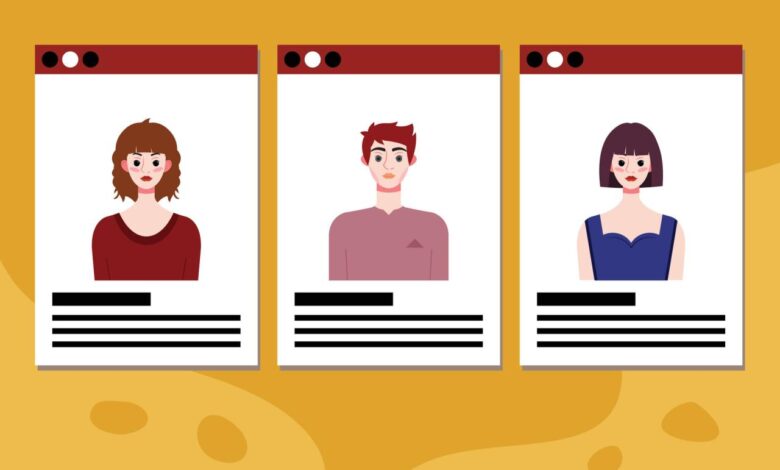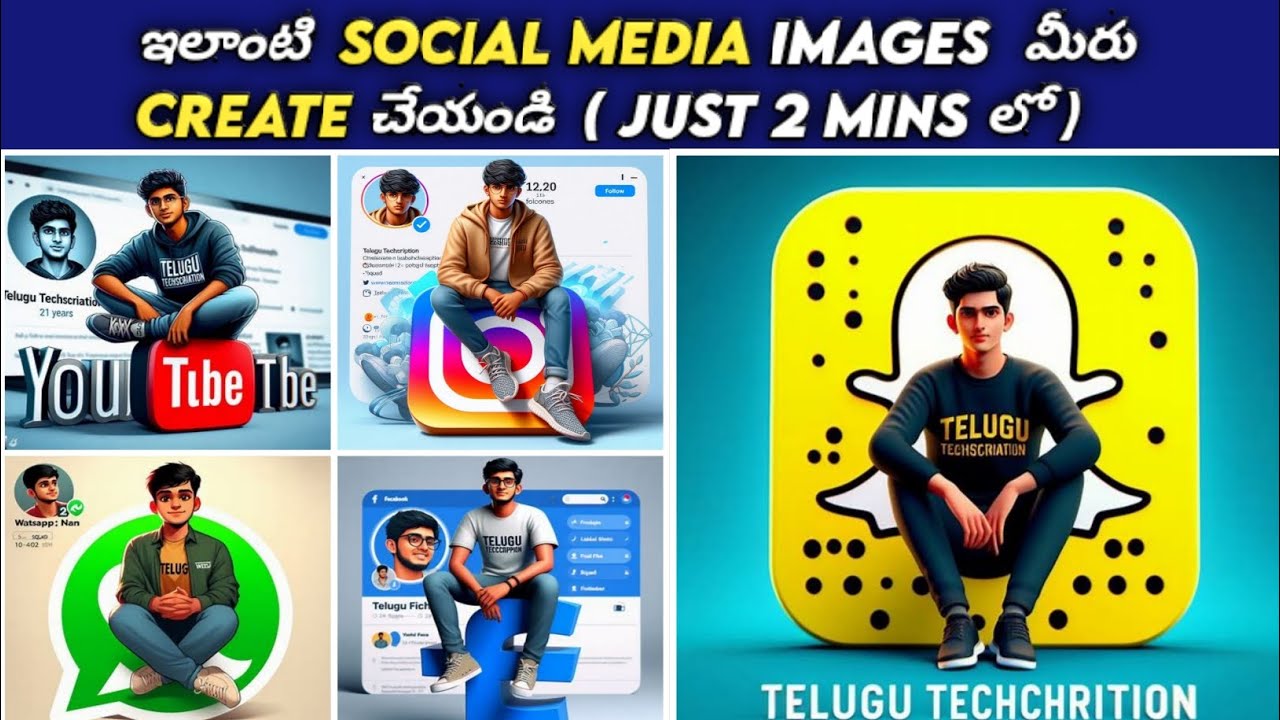
Social Media Cover Images A Complete Guide
Social media cover images are the first impression your brand makes online. They’re the visual gateway to your profile, silently communicating your brand identity and attracting potential followers. Getting them right is crucial for success, and this guide dives deep into the essential aspects of creating impactful cover images that truly represent your brand.
From understanding the optimal dimensions and file formats for various platforms like Facebook, Instagram, and Twitter, to mastering design principles like visual hierarchy and color psychology, we’ll cover everything you need to know. We’ll also explore content strategy, image creation tools, performance analysis, and accessibility best practices. By the end, you’ll be equipped to design captivating cover images that elevate your social media presence.
Dimensions and File Formats for Social Media Cover Images

Source: ytimg.com
Choosing the right dimensions and file format for your social media cover images is crucial for a professional and impactful online presence. Incorrect dimensions can lead to your image appearing cropped, blurry, or pixelated, diminishing its visual appeal and potentially harming your brand image. Similarly, selecting the wrong file format can result in larger file sizes, slower loading times, and a loss of image quality.
Let’s delve into the specifics for optimal results.
Ideal Dimensions and File Formats for Different Platforms
The ideal dimensions for social media cover images vary depending on the platform. Using the correct dimensions ensures your image is displayed correctly and doesn’t get distorted. Here’s a table summarizing the recommended dimensions and file types for some popular platforms:
| Platform | Width (pixels) | Height (pixels) | File Type Recommendations |
|---|---|---|---|
| 820 | 312 | JPEG, PNG | |
| 1500 | 1500 | JPEG, PNG | |
| 1500 | 500 | JPEG, PNG | |
| 1584 | 396 | JPEG, PNG |
Implications of Using Incorrect Dimensions
Using incorrect dimensions can significantly impact the visual appeal of your cover image. For instance, uploading a Facebook cover image with the wrong dimensions might result in parts of the image being cut off, making it look incomplete and unprofessional. On Instagram, an image that’s too small might appear blurry and pixelated, while an image that’s too large might be compressed, leading to a loss of quality.
Inconsistent imagery across platforms creates a disjointed brand experience, reducing overall impact. Consistent branding requires attention to these details.
File Format Considerations
The choice of file format also influences the quality and size of your cover image. JPEG (Joint Photographic Experts Group) is a widely used format known for its good compression, resulting in smaller file sizes. However, it can lead to some loss of image quality, especially with sharp lines or text. PNG (Portable Network Graphics) is a lossless format, meaning it preserves image quality without compression artifacts.
However, PNG files are generally larger than JPEGs. GIF (Graphics Interchange Format) is best suited for animated images, allowing for short looping animations on platforms that support this format. For static images, JPEG or PNG are generally preferred.
Design Principles for Effective Social Media Cover Images
Creating compelling social media cover images isn’t just about aesthetics; it’s about strategically communicating your brand and engaging your audience. A well-designed cover image acts as a visual handshake, instantly conveying your message and enticing viewers to learn more. Understanding and applying key design principles is crucial for maximizing impact.
Visual Hierarchy in Cover Image Design
A strong visual hierarchy guides the viewer’s eye through the image, emphasizing key elements and creating a clear flow of information. Without a well-defined hierarchy, your message can become lost in a jumble of visuals. Effective visual hierarchy ensures that the most important information is immediately noticed.
- Size and Scale: Larger elements naturally draw more attention. A large, bold headline will immediately grab the viewer’s eye, while smaller text can provide supporting details. For example, a cover image for a photography business might feature a stunning, large-scale photograph as the primary focus, with the business name and tagline subtly placed underneath.
- Color Contrast: High contrast between colors makes certain elements stand out. A bright, vibrant logo against a dark background will be far more noticeable than one that blends seamlessly into its surroundings. Think of a travel agency using a bright turquoise logo on a deep navy background.
- Placement and Positioning: Strategic placement of elements directs the viewer’s gaze. The top left corner is often considered the most prominent area, so placing your brand logo or most important message there is a common technique. A clothing brand might showcase their latest collection on the top left, and place a call to action (e.g., “Shop Now”) in the bottom right.
- Whitespace: Strategic use of whitespace (empty space) creates visual breathing room and prevents the image from feeling cluttered. It allows the eye to rest and focus on key elements. An example would be a minimalist design for a tech company, where a clean white background highlights a sleek product image.
Color Psychology and Viewer Engagement
Color evokes emotion and influences perception. Understanding color psychology allows you to choose colors that align with your brand and resonate with your target audience. Using colors strategically can significantly impact viewer engagement and brand recall.For instance, using calming blues and greens might be suitable for a wellness brand, conveying serenity and trust. Conversely, vibrant reds and oranges might be more appropriate for a fast-food restaurant, evoking feelings of excitement and energy.
A financial institution might opt for blues and greens to inspire trust and stability, while a gaming company might employ vibrant neons to convey energy and excitement.
The Importance of Whitespace
Whitespace, or negative space, is often overlooked but plays a crucial role in creating a clean and professional look. It prevents your design from feeling cluttered and overwhelming, allowing the key elements to breathe and stand out. Overcrowding a cover image with too many elements will only confuse the viewer and dilute your message. Think of it as the visual equivalent of a well-written sentence; too many words crammed together are difficult to read and understand.
Sample Cover Image Concept: A Fitness App
Imagine a cover image for a new fitness app. The background is a soft, gradient of blues and greens, evoking a sense of calm and well-being. In the center, a silhouetted figure is shown doing yoga, emphasizing health and mindfulness. The app’s logo is placed prominently in the top left corner, while a concise tagline, “Find Your Balance,” is positioned beneath the figure.
A subtle call to action, “Download Now,” is placed in the bottom right corner. The overall design is clean and uncluttered, with ample whitespace allowing each element to stand out. The color palette is calming and sophisticated, while the yoga pose suggests a holistic approach to fitness. The visual hierarchy guides the viewer’s eye naturally, starting with the logo, then to the figure and tagline, and finally to the call to action.
Content Strategy for Social Media Cover Images
Crafting compelling social media cover images isn’t just about aesthetics; it’s about strategic communication that aligns with your brand and drives engagement. A well-planned content strategy ensures your cover images consistently reinforce your brand identity, promote your offerings, and ultimately, achieve your marketing goals. This involves careful consideration of brand elements, messaging, and a cohesive visual approach across all your platforms.
Your social media cover images are prime real estate. They’re the first thing people see, making a lasting first impression. Therefore, a clear content strategy is crucial for maximizing their impact. By thoughtfully incorporating your brand’s personality and current initiatives, you can significantly improve your brand visibility and drive conversions.
Incorporating Brand Logos and Messaging Effectively
The effective use of logos and messaging on your cover images is paramount for brand recognition and clarity. Avoid cluttering the image; instead, prioritize clean design and strategic placement. Your logo should be easily identifiable and not overly small or obscured. The messaging should be concise, impactful, and relevant to your brand’s current focus. For example, a tech company might showcase their logo prominently alongside a tagline highlighting their latest innovation, while a bakery could feature their logo subtly integrated into a mouthwatering image of their signature cake, accompanied by a short, enticing description.
Using Cover Images to Promote Current Offers or Events
Social media cover images offer a powerful opportunity to promote limited-time offers, upcoming events, or new product launches. Consider creating visually appealing graphics that clearly communicate the offer or event details, including key dates, times, and any relevant calls to action. For instance, a clothing retailer could use a cover image featuring a model wearing their new fall collection, accompanied by a clear message highlighting a seasonal sale.
A concert promoter might use a captivating image of the artist performing, coupled with dates, venue information, and a link to ticket sales. Remember to keep the design consistent with your overall brand aesthetic.
Creating a Cohesive Visual Identity Across Social Media Platforms
Maintaining a consistent visual identity across all social media platforms is essential for building a strong brand presence. This involves using a consistent color palette, typography, and imagery style across all your cover images. Develop a brand style guide that Artikels these elements, ensuring everyone involved in creating your social media content adheres to the established guidelines. This consistency reinforces brand recognition and creates a professional, polished image for your business.
For example, a consistent use of a specific font, color scheme, and image style across Facebook, Instagram, and Twitter will reinforce brand recognition and improve audience engagement.
Image Creation Tools and Techniques
Crafting compelling social media cover images requires the right tools and techniques. The visual impact of your cover image is crucial for grabbing attention and conveying your brand’s message effectively. Choosing the appropriate software and understanding design principles will significantly influence your success. Let’s delve into the specifics of image creation.Choosing the right image editing software is the first step in creating professional-looking social media cover images.
Two popular options are Canva and Adobe Photoshop, each with its own strengths and weaknesses.
Comparison of Image Editing Software: Canva vs. Adobe Photoshop
Canva and Adobe Photoshop represent different approaches to image editing. Canva is a user-friendly, drag-and-drop interface ideal for beginners and those needing quick, visually appealing results. Photoshop, on the other hand, is a powerful professional tool offering advanced features and unparalleled control, but it has a steeper learning curve and requires a subscription.
- Canva: Features include a vast library of templates, stock photos, and elements; intuitive interface; easy resizing for various platforms; collaboration features; and free and paid plans.
- Adobe Photoshop: Features include advanced layer manipulation, precise control over image details, extensive filter options, RAW image editing capabilities, and powerful retouching tools; requires a subscription; steeper learning curve.
Common Design Mistakes to Avoid When Creating Cover Images
Many common pitfalls can undermine the effectiveness of your social media cover images. Avoiding these mistakes will ensure your images are visually appealing and effectively communicate your message.
- Low-resolution images: Using blurry or pixelated images will make your brand appear unprofessional.
- Poor color choices: Inconsistent or clashing colors can be distracting and detract from your message.
- Cluttered design: Too many elements can overwhelm viewers and make it difficult to understand your message.
- Poor text readability: Using fonts that are too small, difficult to read, or clashing with the background will hinder understanding.
- Ignoring platform-specific dimensions: Images that are not properly sized for each platform will appear cropped or distorted.
- Lack of brand consistency: Cover images that don’t align with your overall brand identity will confuse viewers.
Step-by-Step Guide to Resizing and Optimizing Images Using Free Online Tools
Many free online tools can help you resize and optimize your images for various social media platforms. This process ensures your images look their best on each platform, regardless of its specific requirements.
- Select an online image resizer: Several free online tools are available, such as ResizeImage.net or iLoveIMG. These tools typically allow you to upload your image, specify the desired dimensions, and download the resized image.
- Choose the correct dimensions: Research the recommended dimensions for each social media platform (e.g., Facebook, Twitter, Instagram, LinkedIn) and select the appropriate size for your target platform. For example, Facebook cover photos usually have specific width and height requirements.
- Upload your image: Use the chosen online tool to upload your image. Ensure the original image is of high enough resolution to avoid significant quality loss after resizing.
- Specify dimensions and format: Enter the desired dimensions (width and height) in pixels. Select the appropriate image format (JPEG is generally recommended for web use due to its balance of quality and file size). Some tools allow you to compress the image further to reduce file size without significant quality loss.
- Download the optimized image: Once the resizing and optimization are complete, download the processed image to your computer. You can then upload this optimized image to your chosen social media platform.
Analyzing the Impact of Social Media Cover Images
Source: vecteezy.com
So, you’ve designed some killer social media cover images. But how do you know if they’re actually working? Simply looking at them isn’t enough; you need data to back up your creative choices and inform future designs. This section will explore methods for tracking the performance of your cover images and using that information to improve your strategy.Analyzing the effectiveness of your social media cover images requires a robust tracking and analysis approach.
Ignoring this crucial step is like sailing without a map – you might reach your destination eventually, but it will be far less efficient and possibly lead you astray. By implementing the strategies Artikeld below, you can gain valuable insights into what resonates with your audience and optimize your designs for maximum impact.
Methods for Tracking Cover Image Performance
Tracking the performance of your cover images involves monitoring key metrics to understand how they influence user engagement and conversions. These metrics provide valuable insights into what’s working and what needs improvement. The following metrics provide a comprehensive picture of your cover image effectiveness:
- Click-Through Rates (CTR): This metric measures the percentage of users who click on a link within your cover image. A higher CTR indicates a more compelling and effective design. For example, if 1000 people see your cover image and 100 click the link, your CTR is 10%. This is a crucial metric for driving traffic to your website or landing page.
- Engagement Metrics: These metrics go beyond clicks and measure the overall interaction with your cover image. This includes likes, shares, comments, and saves. Higher engagement suggests your image is visually appealing, relevant, and prompts interaction. For instance, a cover image with a high number of likes and shares signals strong resonance with your target audience.
- Impressions: The number of times your cover image is displayed to users. While not a direct measure of effectiveness, it provides context for other metrics like CTR. A high number of impressions with a low CTR might suggest design flaws or targeting issues.
- Conversion Rates: If your cover image is designed to drive conversions (e.g., purchases, sign-ups), this metric measures the percentage of users who complete the desired action after viewing the image. For example, a high conversion rate from a cover image promoting a specific product indicates its success in driving sales.
A/B Testing for Cover Image Optimization, Social media cover images
A/B testing is a powerful method for comparing different versions of your cover image to determine which performs best. By creating two or more variations with different designs, messaging, or calls to action, you can collect data and identify the most effective approach. This iterative process ensures continuous improvement of your cover image design.For instance, you might test two cover images: one featuring a bright, vibrant color scheme and the other using a more muted palette.
By tracking the performance of each variation, you can identify which design resonates better with your audience. A/B testing allows for data-driven decisions, eliminating guesswork and ensuring that your cover images are optimized for maximum impact.
Interpreting Data to Inform Future Design Decisions
Once you’ve collected data on your cover image performance, the next step is to interpret the results and use them to inform future designs. This involves analyzing the metrics mentioned above to identify patterns and trends. For example, a consistently low CTR might indicate that your call to action is unclear or your image isn’t visually engaging enough.Analyzing the data should be a continuous process.
Regularly review your performance metrics to identify areas for improvement. Use the insights gained to refine your design, messaging, and targeting strategies. Continuously iterate based on data to ensure your cover images remain effective and engaging. For example, if your A/B test reveals that a certain color scheme significantly improves CTR, you can incorporate that color scheme into future designs.
Similarly, if a specific call to action proves more effective, use that language in your future cover images.
Accessibility Considerations for Social Media Cover Images
Creating visually appealing social media cover images is crucial for attracting attention, but equally important is ensuring these images are accessible to everyone, including users with visual impairments. Accessibility isn’t just about following guidelines; it’s about inclusivity and ensuring your brand reaches the widest possible audience. Ignoring accessibility can lead to exclusion and a missed opportunity to connect with a significant portion of your potential followers.Accessibility for visually impaired users primarily revolves around providing alternative text descriptions that convey the image’s content and context.
This allows screen readers to accurately describe the image to users who cannot see it. Furthermore, sufficient color contrast ensures readability for users with low vision or color blindness. These seemingly small steps significantly impact the user experience and demonstrate a commitment to inclusivity.
Alt Text and Descriptive Captions
Alt text (alternative text) is crucial for making images accessible to screen reader users. It’s a short description of the image that appears when a user hovers over the image or when a screen reader encounters it. A well-written alt text should concisely describe the main subject, action, and context of the image. For example, instead of simply writing “image of a product,” a more descriptive alt text would be “A close-up of our new blue widget, showcasing its sleek design and innovative features.” Similarly, captions provide additional context for the image, enhancing comprehension for everyone, including visually impaired users.
Killer social media cover images are crucial for grabbing attention, and that’s true whether you’re on Instagram or YouTube. To really boost your YouTube presence, check out this awesome guide on getting it on with YouTube ; it’ll help you create a channel that shines. Then, make sure your cover images reflect that same high quality and professionalism for a consistent brand image across all your platforms.
A caption might explain the image’s significance or provide further details not readily apparent from the image itself. For instance, an image of a team working together might have a caption: “Our dedicated team celebrating the successful launch of Project Nova.” Both alt text and captions work synergistically to provide a complete picture for all users.
Color Contrast and Readability
Ensuring sufficient color contrast between text and background in your cover image is vital for readability, especially for users with low vision or color blindness. Poor contrast makes it difficult or impossible for some users to read the text overlaid on the image. Accessibility guidelines, such as WCAG (Web Content Accessibility Guidelines), specify minimum contrast ratios. These guidelines recommend a contrast ratio of at least 4.5:1 for normal text and 3:1 for large text.
Tools are readily available online to check the contrast ratio of your chosen color combinations. For example, a dark blue text on a light beige background would generally meet these standards, while light gray text on a white background might not. Choosing color palettes with sufficient contrast ensures that your message is clear and understandable to all users, regardless of their visual abilities.
The importance of this cannot be overstated; it directly affects the usability and inclusivity of your social media presence.
Last Word
Crafting compelling social media cover images is an ongoing process of learning and refinement. By consistently applying the principles discussed—from understanding the technical specifications to leveraging design best practices and analyzing performance data—you can create a cohesive and impactful visual identity across all your social media platforms. Remember, your cover image is often the first and sometimes only chance you have to make a great first impression; make it count!
Essential Questionnaire
What are the best practices for using text in cover images?
Keep text concise and easy to read. Use a clear, legible font and ensure sufficient contrast against the background. Avoid overcrowding the image with too much text.
How often should I update my social media cover images?
It depends on your brand and industry. Consider updating them seasonally, for major promotions, or when your brand identity evolves. Consistency is key, but don’t be afraid to refresh your look periodically.
Can I use the same cover image across all platforms?
While you can use a similar design concept, you should always resize and optimize images to fit each platform’s specific dimensions to avoid distortion.
What if I don’t have design skills?
Many user-friendly tools like Canva and free online image editors are available. These tools offer templates and easy-to-use design features that require minimal design experience.




